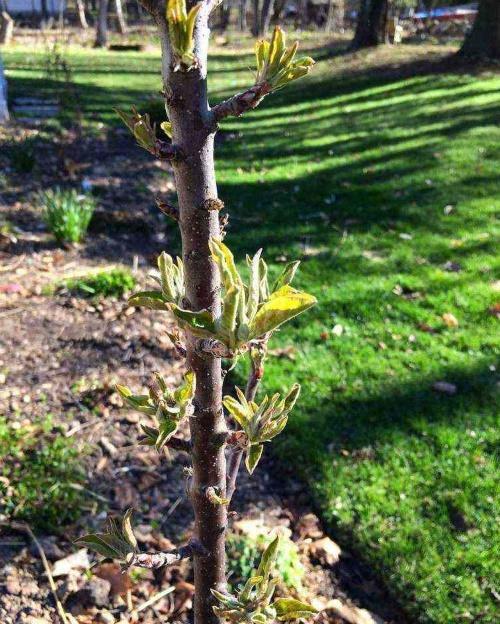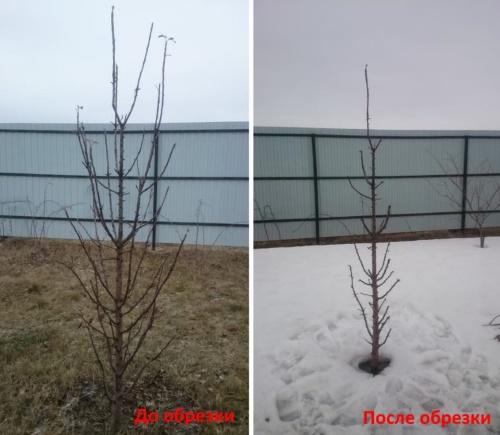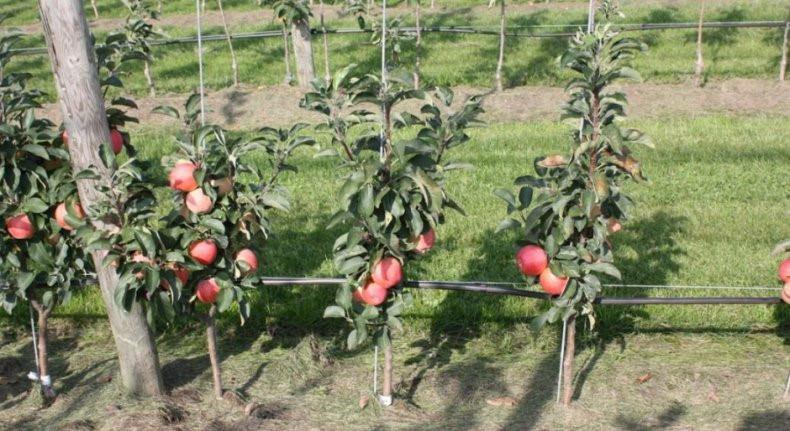How to prune a columnar apple tree - timing and pruning scheme
 Apple trees are one of the most popular crops in gardens, because everyone loves to feast on their juicy and sweet fruits. However, it is not always possible to grow an apple orchard. An adult tree grows a large crown, and takes up a lot of space in small areas. But if you are lucky enough to get a sapling of a columnar apple tree, feel free to buy several at once. Slender apple trees really grow in the form of a column, not requiring much space, moreover, they will delight you with a bountiful harvest. It is believed that they absolutely do not need a haircut due to the natural formation of the crown. In general, this is true, but in order to maintain its natural shape, you should know how to prune a columnar apple tree. Regular pruning will prevent your tree from becoming sprawling if the top freezes. It will also help regulate fruiting to avoid overloading.
Apple trees are one of the most popular crops in gardens, because everyone loves to feast on their juicy and sweet fruits. However, it is not always possible to grow an apple orchard. An adult tree grows a large crown, and takes up a lot of space in small areas. But if you are lucky enough to get a sapling of a columnar apple tree, feel free to buy several at once. Slender apple trees really grow in the form of a column, not requiring much space, moreover, they will delight you with a bountiful harvest. It is believed that they absolutely do not need a haircut due to the natural formation of the crown. In general, this is true, but in order to maintain its natural shape, you should know how to prune a columnar apple tree. Regular pruning will prevent your tree from becoming sprawling if the top freezes. It will also help regulate fruiting to avoid overloading.
When to cut apple pillars

- early ripe apple trees are best cut in the fall, a couple of weeks before the onset of frost;
- medium and late varieties - in spring, before sap flow begins.
In addition, in the summer it will be necessary to inspect the tree and pluck out the young growth on the stem, if it turns out to be not fruitful. And before wintering, columnar apple trees should be cleaned of broken and diseased branches.
A characteristic feature of this type of culture is that the apical bud is "responsible" for its shape. She is the most important, and cannot be removed. If the tip develops naturally, then the side branches will be short, keeping their shape. In this case, it is enough to simply thin out the crown in order to avoid thickening and remove excess growth and tops.
How to prune a columnar apple tree
 On the territory of our homeland, columnar apple trees often do not survive wintering. As a result, the apical buds freeze out, which gives impetus to the growth of lateral branches in length. In this case, competent pruning is simply necessary, otherwise, over time, the apple tree will turn into a spreading tree.
On the territory of our homeland, columnar apple trees often do not survive wintering. As a result, the apical buds freeze out, which gives impetus to the growth of lateral branches in length. In this case, competent pruning is simply necessary, otherwise, over time, the apple tree will turn into a spreading tree.
The variety has one more feature, and it was she who determined the nature of pruning the apple-tree-column. Its branches, located upward (vertically), give very good growth. Whereas shoots growing horizontally give a lot of ovaries, but do not differ in special growth.
Based on this, the columnar apple tree should be cut according to the following scheme:
- In the first year of life, the seedling will give side branches. Without touching the central shoot, you need to shorten the one-year growth to two buds. If there are too many side branches, you can remove some, leaving 4-5 pieces evenly spaced around the stem.
- For the second year, the abandoned branches will give new lateral branches. Of these, only shoots growing upward (as vertical as possible) are subject to pruning. They need to be shortened to 2 buds. The branches located horizontally are left completely. It is on them that the next season will bear fruit.
- By the end of the third year of life, the branch that has borne fruit should be completely cut out. For replacement, a pair of shoots is formed again on the branch that was shortened in the previous season.The principle is similar: the branch growing downward is left intact, and the vertical shoot is shortened to 2 buds.
- In the fourth season, pruning should be done in the same way.
- At the 5th year of life, this fruit branch must be removed completely by cutting into a ring.
Thus, by correctly pruning the apple tree, every 5 years it rejuvenates by removing old lateral shoots. Young growth is formed in a similar way. With proper care, the tree will delight with a harvest of up to 20 years, after which it can be completely rejuvenated by shortly cutting the trunk.
